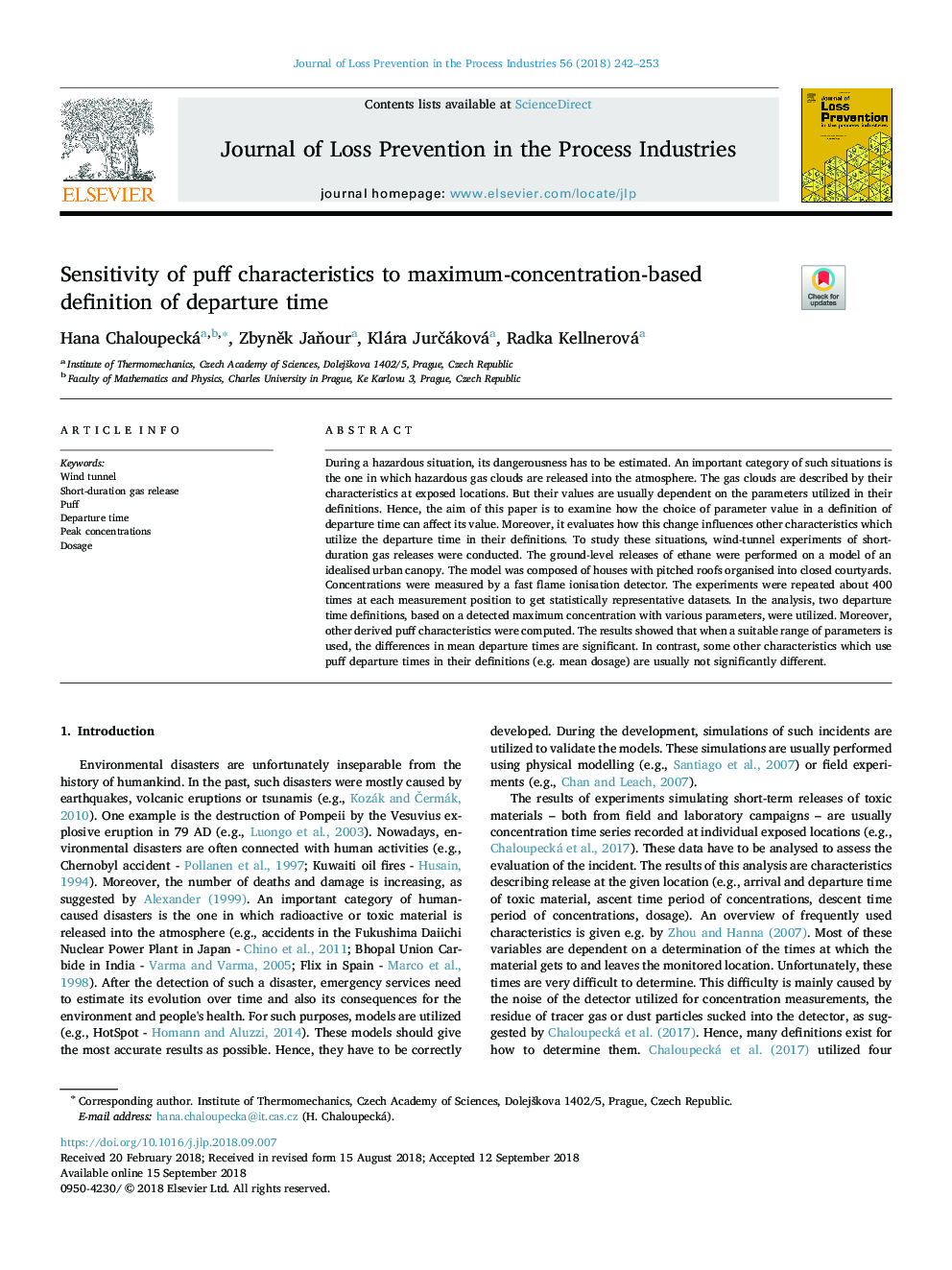| Article ID | Journal | Published Year | Pages | File Type |
|---|---|---|---|---|
| 11003041 | Journal of Loss Prevention in the Process Industries | 2018 | 12 Pages |
Abstract
During a hazardous situation, its dangerousness has to be estimated. An important category of such situations is the one in which hazardous gas clouds are released into the atmosphere. The gas clouds are described by their characteristics at exposed locations. But their values are usually dependent on the parameters utilized in their definitions. Hence, the aim of this paper is to examine how the choice of parameter value in a definition of departure time can affect its value. Moreover, it evaluates how this change influences other characteristics which utilize the departure time in their definitions. To study these situations, wind-tunnel experiments of short-duration gas releases were conducted. The ground-level releases of ethane were performed on a model of an idealised urban canopy. The model was composed of houses with pitched roofs organised into closed courtyards. Concentrations were measured by a fast flame ionisation detector. The experiments were repeated about 400 times at each measurement position to get statistically representative datasets. In the analysis, two departure time definitions, based on a detected maximum concentration with various parameters, were utilized. Moreover, other derived puff characteristics were computed. The results showed that when a suitable range of parameters is used, the differences in mean departure times are significant. In contrast, some other characteristics which use puff departure times in their definitions (e.g. mean dosage) are usually not significantly different.
Related Topics
Physical Sciences and Engineering
Chemical Engineering
Chemical Health and Safety
Authors
Hana Chaloupecká, ZbynÄk JaÅour, Klára JurÄáková, Radka Kellnerová,
